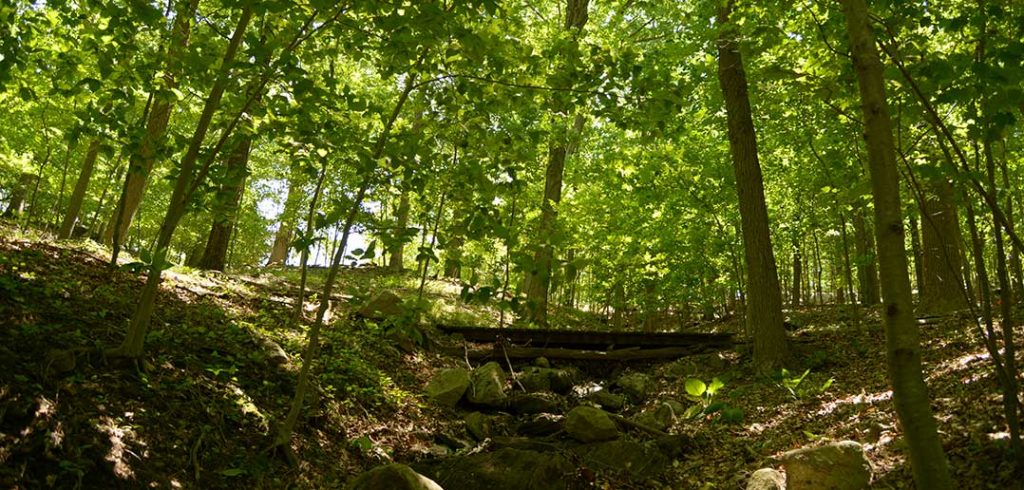The view from the outdoor deck of the Louis Calder Center’s 2,600 square-foot log cabin is a breathtaking one, as the shimmering waters of Calder Lake stretch for nearly a quarter mile. The north end of the lake is clearly visible, but for many years, visitors wishing to walk there would have to take a circuitous, hilly path around the lake’s western shore to reach it.
Until now. In the last two years, facilities crews have cleared out overgrown shrubbery and dead trees, many of which were felled by the winds of Hurricane Sandy. The eastern shore path is now open to visitors—part of a half-mile, easy-to-follow loop around the lake and through the surrounding forest.
Tom Daniels, PhD, director of the center and associate research scientist in vector ecology, said the re-opening of the path is part of larger, long-term effort to better manage the forests and wetlands of the 113-acre property. He hopes it also makes it more attractive to members of the wider Fordham community and other science communities, looking for locations to do research.
“If you’ve got a piece of property that has a certain value to researchers, one of the goals is to maintain its value. So we have to manage the property at a level that we haven’t done before,” he said.
Some of that management involves clearing out invasive flora, like Japanese barberry, stilt grass, tree of heaven, and garlic mustard. The center has also formed a committee of faculty members, and drafted a master plan for the property with the help of a consultant whose previous clients include the New York Botanical Garden.
It also involves making the larger Fordham community aware of the research opportunities there on disease vectors like ticks and mosquitoes, aquatic systems, herpetology (amphibians and reptiles), bird, and mammal studies, as well as plant evolution and urban ecology research.
Although staffing limits and the station’s mission of providing an academic environment conducive to faculty and student research on ecological issues mean that the center will have to occasionally decline visitors, Daniels said he wants to accommodate as many members of the Fordham community as possible. He noted that Ram Vans depart from the Rose Hill campus three times a day, five days a week.
“Biologists aren’t the only ones that might find Calder exciting. We’ve got things like geological outcroppings that are interesting if you’re a geologist. We have scenic views that are really great if you’re a photographer. We have animals that are fun to look at if you’re interested in wildlife illustration, and we have a variety of plants— both native and ornamental—that are great to take pictures of and to illustrate,” he said.
“We want to make Calder a better-known resource to the Fordham community and to scientists as a whole, because there’s a lot to take advantage of.”
[doptg id=”52″]
